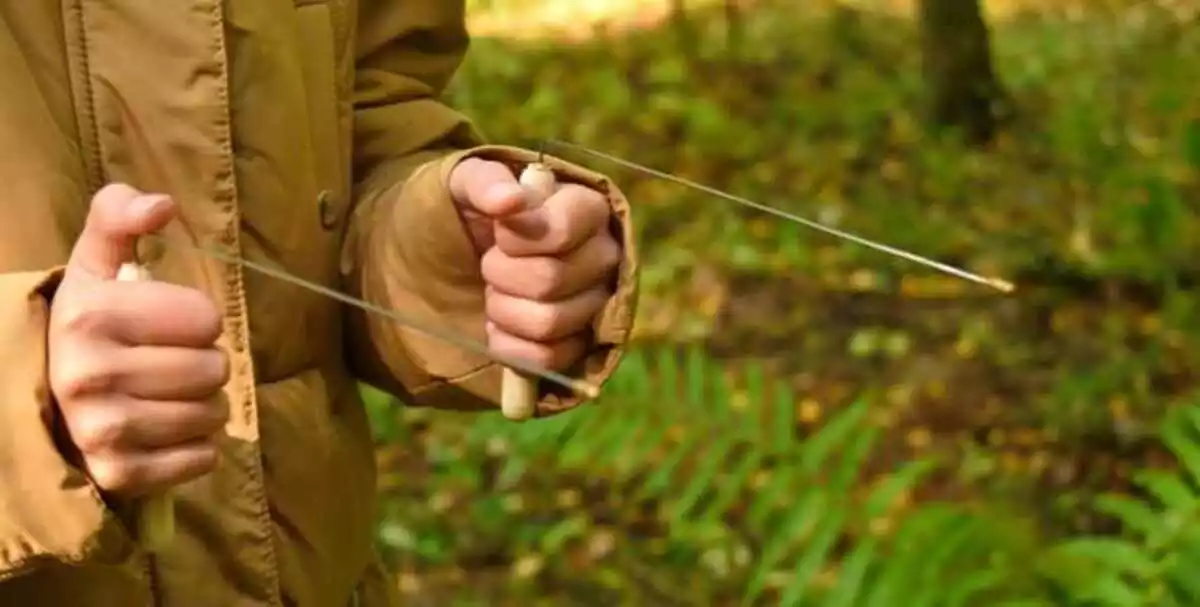
What Is A Dowser: The Meaning And History Of Dowsing
Find out how to make your own dowsing rod using hazel twigs.

This article will present a brief review of the concept of dowsing throughout history, what it is and how to make your own dowsing rods as well as how to use them.
What is a dowser?
The art of dowsing has been practiced since ancient times. There are engravings from eight thousands years ago depicting dowsers looking for water. The figure of the dowser has existed in all cultures: Eskimos, Sumerians, Egyptians, Chaldeans, Hebrews, Celts, Greeks, Germans and Romans have had dowsers among their priests, leaders or guides.
In the Bible, you can find the name of an important dowser: Moses, the leader of the Israelites, who, around 1250 BC, sought water in the Sinai Desert with his rod. In the past, kings and princes hired dowsers to find streams, underground minerals or metals buried underground.
During the reign of King Louis XIII of France, Baron de Beausoleil and his wife, Martine Bertereau, successfully discovered 150 mines using dowsing rods.
For years, the art of dowsing was at odds with the Church, as it was understood as something connected to witchcraft. However, many Jesuits and priests have practiced it. Father Le Lorrain published in 1693 a book called “Occult Philosophy”, which dealt with this subject; but, in 1701, the book was blacklisted after an investigation of the Inquisition.
What is dowsing?
When talking about dowsers, the concept of dowsing immediately comes to mind. It can be defined as the ability to see the invisible, particularly, the ability to perceive the waves emitted by all kinds of bodies, both visible and invisible, to be able to identify them, either up close or far away, and to determine the exact place where they are, as well as their nature, composition or quantity. Dowsing helps people find water, springs or hidden deposits. The tales of dowsers looking for water are more real than you may think!
Also, there are many people who consider that dowsing is a great method of divination that allows you to discover many aspects of your future, because each one of us has a kind of magnetism, an energy that can be transmitted. They claim that the ability to dowse exists within each one of us as well as our senses, and that it is only a matter of will to develop and use it.
How to make dowsing rods
In order to find water, dowsers use L-shaped or Y-shaped rods as well as hazel twigs. Dowsers find water because their energy vibrates in line with that of groundwater.
So, thanks to energy vibrations, they are able to discover underground objects, cavities, water or lost objects.
Not all detection instruments have the same sensitivity due to their design. Some of them have specific shapes and sizes that have been designed so that they can resonate with particular waves.
The most universal dowsing rods are the L-shaped ones, which can be very easily bought on the internet. If you want to make them at home, you can use two copper welding rodsof about 50 cm long. The rods should be bent so that one side is 17 cm long and the other, 33 cm.
Although the dowser’s detection instrument consists of two antennas, each held in one hand, it must be seen as a single tool. The separation between the two antennas is only physical, since they must vibrate in unison with each other. The dowsing rods should be held parallel, slightly tilted forward, so that they point their direction forward. The forearms are placed along the body, only slightly separated from it.
- You may be interested in: Clairvoyance: 6 Signs Your Psychic Is Genuine
Hazel dowsing rods
If you are wondering how to make dowsing rods, the easiest way is by using hazel or willow twigs, which should be cut at the place where you are going to look for water.
These types of wood are flexible and not easily breakable when freshly cut. Besides, they show powerful energy vibrations for water detection due to the wood’s direction and its energetic memory.
To do this, you should find a forked hazel rod of two thin, smooth and regular branches harmoniously connected to each other. Clean the main branches of the twigs that could prevent a good grip. Then, cut the two ends to the same length, approximately 50 cm from the junction point of the branches.
How to use the dowsing rods
Once you have made your dowsing rod, hold it with your hands open, your palms facing the sky and your thumbs placed at the end of each branch. Then, close your hands holding the rod horizontally to the ground.
You will then have to turn your wrist sensitively to hold the dowsing rod in an unstable and flexible balance.
Once you have learned how to handle the dowsing rod, your next step is to find water. Go to a piece of ground where you are sure there is a spring or an underground well. If you are sensitive to dowsing, if you are a genuine dowser, then you will soon feel the first movements of the rod when you come across a stream of groundwater.
- Find out more about: What Is Feng Shui & Harmony with the Bagua House Map